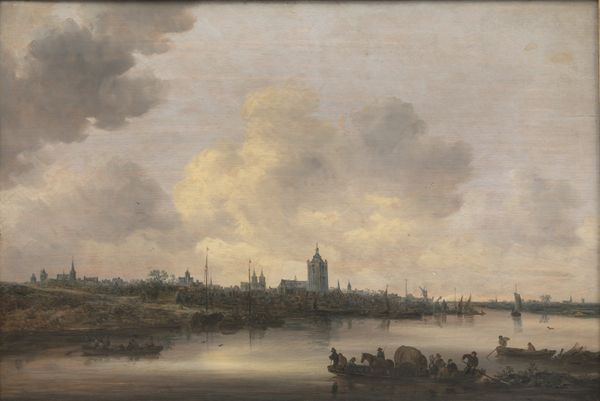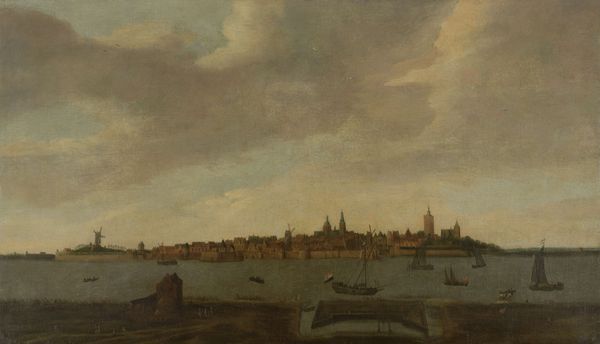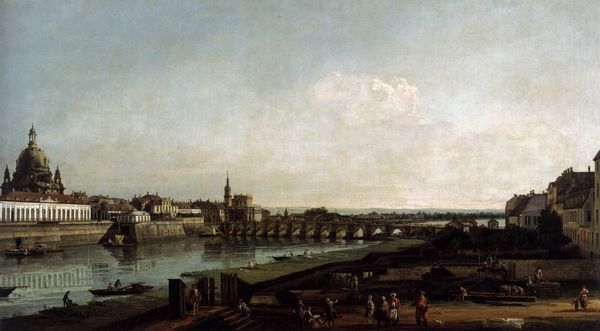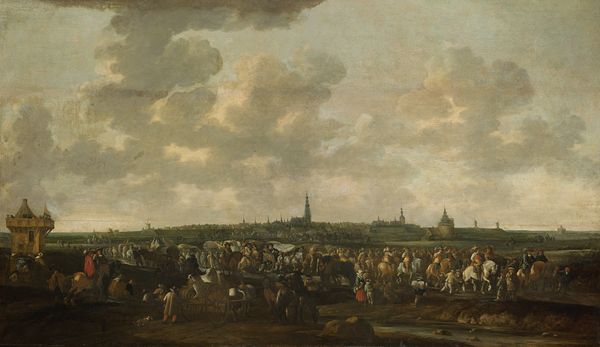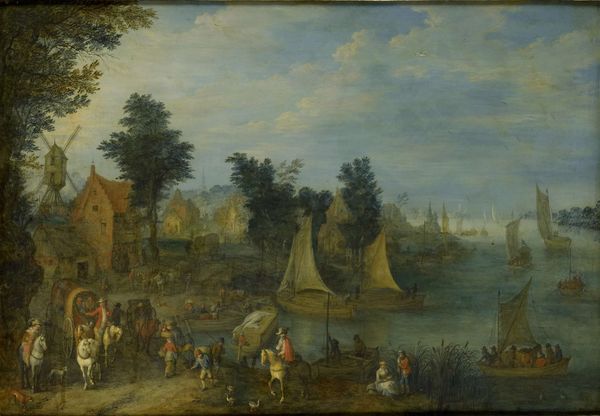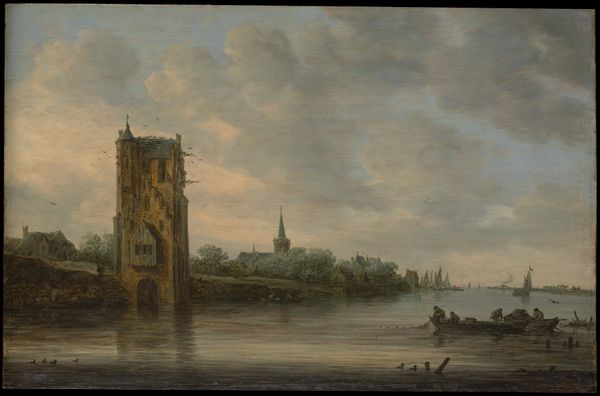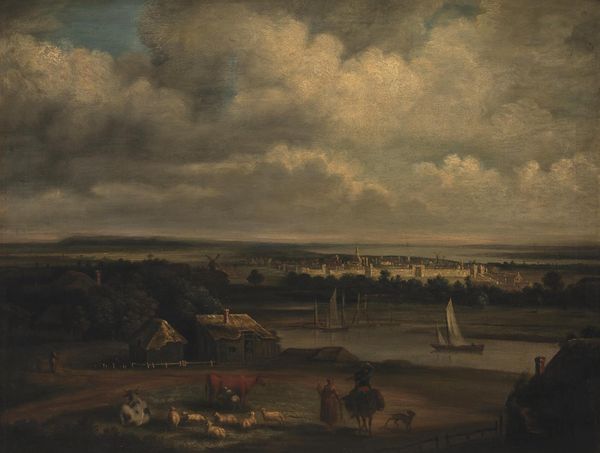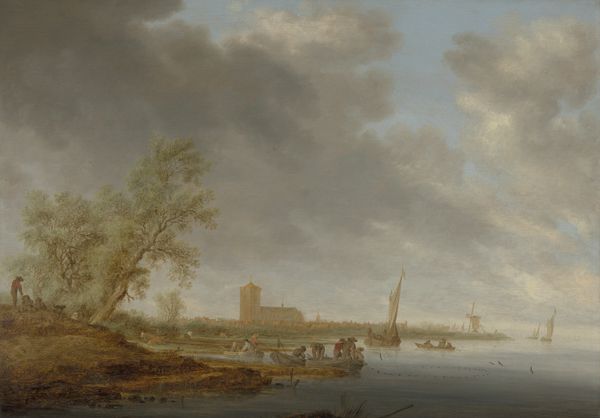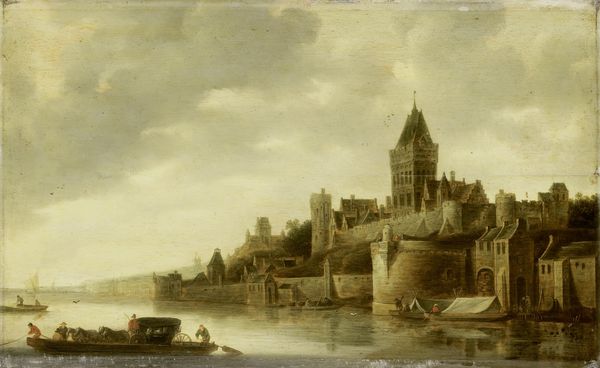
painting, oil-paint
#
baroque
#
dutch-golden-age
#
painting
#
oil-paint
#
landscape
#
cityscape
#
realism
Dimensions: 20 cm (height) x 36.5 cm (width) (Netto)
Curator: Here we have Herman Saftleven's "View of Utrecht," likely painted sometime between 1624 and 1685. It’s currently part of the collection at the Statens Museum for Kunst. Editor: It's dominated by these amber tones, a kind of faded glory feel. A melancholic beauty, if you will. The skyline, even in the distance, has such a dominating presence. Curator: Indeed, observe how the architectural forms, primarily churches and towers, punctuate the horizon line. Saftleven employs a high degree of realism typical of Dutch Golden Age painting, offering a meticulous rendering of the city’s features. Notice the light. Editor: And what kind of power structures are those buildings intimating? Who had access? Who built those? It feels like this painting, ostensibly a landscape, speaks to themes of power, religion, and probably colonialism if we look at the wider context of the Dutch Golden Age and overseas trade routes. Curator: That is all latent, surely, but primarily, it’s a formal exercise in perspective and tonal variation. Saftleven uses a fairly limited palette. There's an exploration of aerial perspective. See how he diminishes details to suggest distance and how he creates a believable sense of atmospheric depth. The artist carefully juxtaposes different forms to produce rhythm and coherence within the whole picture plane. Editor: But can we divorce that technical skill from its historical realities? Those formal choices contribute to a particular, maybe even propagandistic, vision of the Dutch Republic. This picture isn't simply hanging; it participates in a complex web of political, social, and economic relations of that time. Curator: Of course, you’re asking questions that demand we look past surface and enter the arena of symbolic meaning. Saftleven, however, excels in his ability to record the natural and built world through acute observation and an adroit technique. Look closer, that should not be understated here. Editor: A picture speaks a thousand words, not all of them pretty. But this painting makes me ponder about the legacy of empire, its visual traces within the cityscape, and its impact on those displaced by it. Curator: I remain in awe of its compositional structure, an excellent painting even now. Editor: I agree, regardless, it definitely gives us a lot to talk about and consider.
Comments
No comments
Be the first to comment and join the conversation on the ultimate creative platform.

